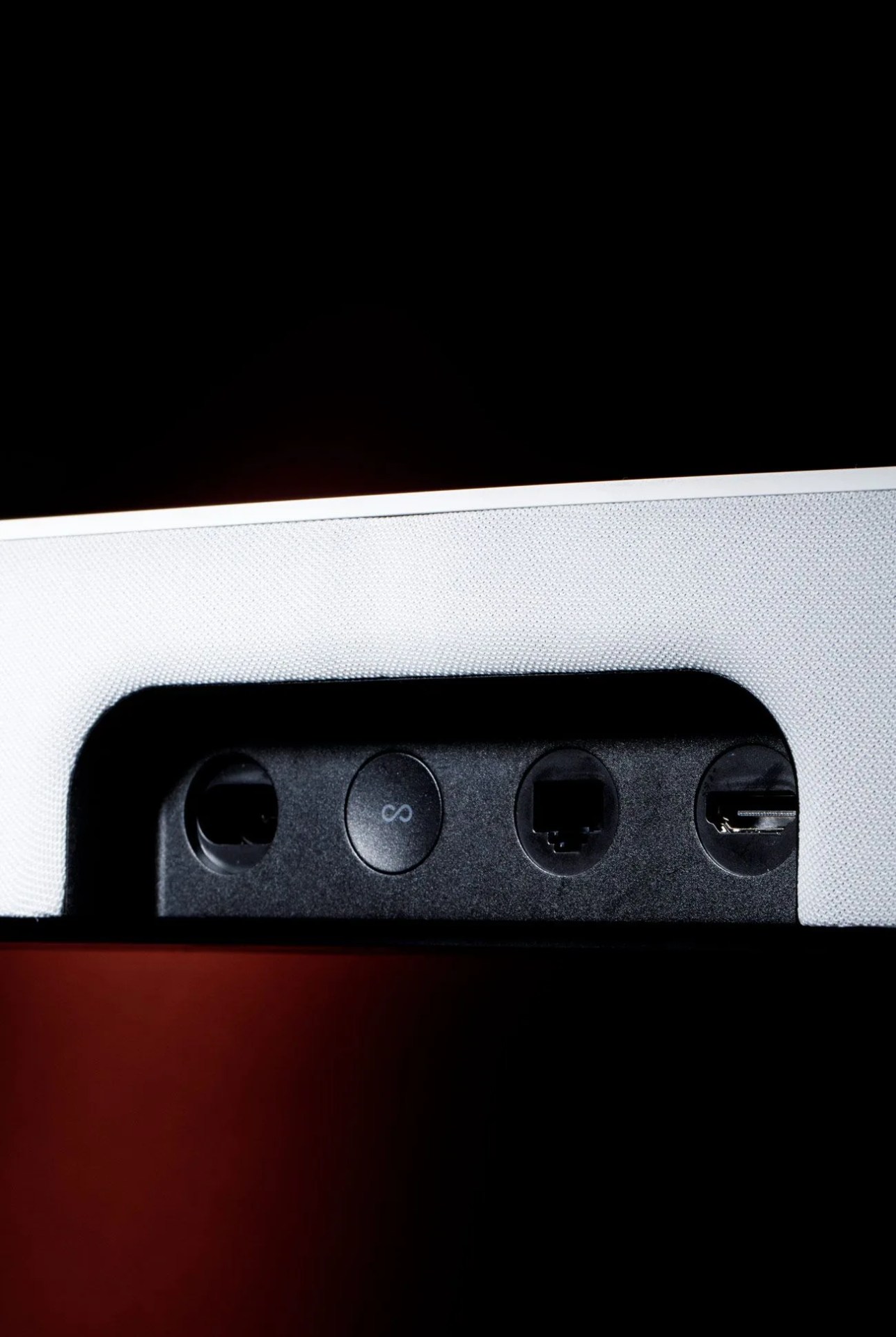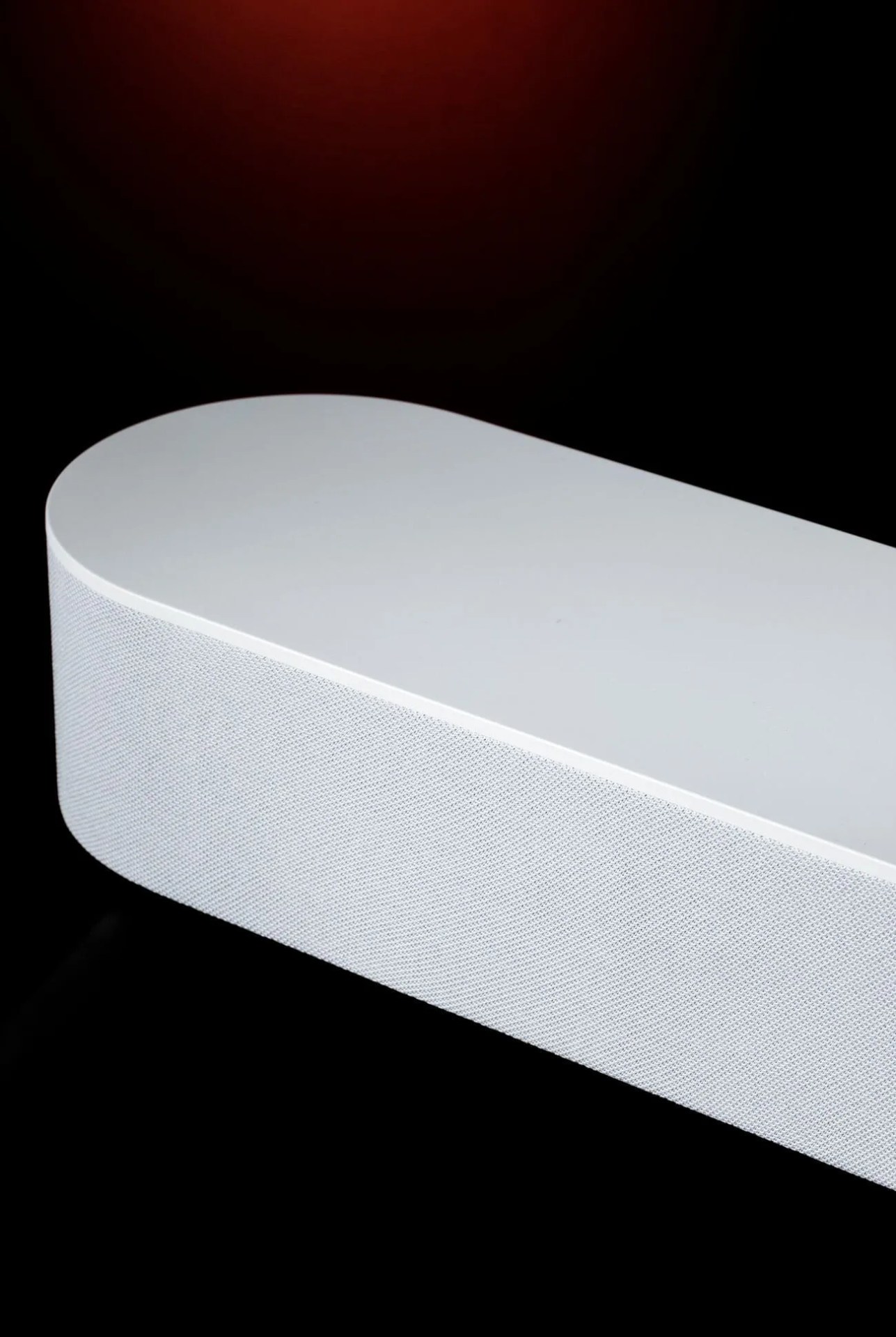The Sonos Beam ($399) is the company’s newest soundbar that, similar to the Playbase ($699) and the Playbar ($699) that came before it, integrates your TV with your existing Sonos speakers. If you have a multi-room setup you can play the TV’s audio throughout your whole house, or you can configure your other Sonos speakers as satellites and/or rear channels and thus have a complete Sonos surround sound system.
That said, the Sonos Beam is much more than a smaller, more affordable version of those other soundbars. It’s a smart speaker with Alexa built-in, like the Sonos One, so you can ask Alexa to play music or control your smart home devices. And since it’s connected to your TV, you can use your voice to control your TV, too, which is a first for Sonos. For TV control, the Sonos Beam will work best for those with an Amazon Fire TV (or a TV with an Amazon Fire TV dongle), allowing you to ask Alexa to turn on the TV and even go to specific shows or channels. Also, unlike Sonos’s larger soundbars, the Sonos Beam can be either wall mounted or left to rest on your media console. (The Playbase needs to rest under your TV while the Playbar is designed to be wall mounted.)
The Good: The great thing about any Sonos speaker, other than its sound quality, is that it comes with great software and an intuitive companion app — and the Sonos Beam is no different. You just plug the soundbar in, and then the app walks you through how to correctly connect it to your TV. The app also tunes the soundbar so that it’s optimized for your room, using its Trueplay tuning software, same as other Sonos speakers. If you own an Amazon Fire TV (or dongle), the Sonos Beam will be able to control your television almost completely. It plugs into to your TV through HDMI ARC port and it supports CEC, so you can use your TV’s remote to adjust the volume if you don’t feel like asking Alexa.
One of the most intriguing aspects of the Sonos Beam is that Sonos promises that it will eventually support all major virtual assistants, including Alexa (built-in), Siri (mid-July) and Google Assistant (by end of 2018). Not only that, but the Sonos Beam promises “cross-platform voice control,” meaning, as it pertains to music streaming, you’ll be able to ask Siri to play a song, then ask Alexa what song was playing. (This is an example that Antoine Leblond, Sonos’s VP of software, showed off at the Sonos Beam’s launch event in early June). You’ll be able to do other things like this eventually, but the conditions need to be perfect for it to work — certain virtual assistants won’t work with certain streaming services, for example. These cross-platform voice controls aren’t available at launch, so I wasn’t able to test them, but knowing they’re coming is a good thing. (It makes the product “future proof.”)

Who They’re For: At launch, there are two ways of looking at the Sonos Beam. Either 1. you’re buying it because you have other Sonos speakers and you want to integrate your TV into the mix, or 2. you want one smart speaker to rule your home — it can greatly improve the sound of your TV while also being a darn good speaker for streaming music. In the latter instance, the Sonos Beam is effectively taking the place of any quality sounding smart speaker, like the Google Home Max or Apple’s HomePod.


